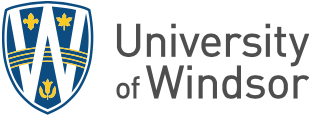Reflection: What is it?
- A subjective response to experiences, situations, events, or new information
- A “processing” phase where thinking and learning take place
- Used across disciplines
- Enables students to be…
- active and aware in and of the learning process
- purposeful and engaged participants, readers, and thinkers
Models of Reflection
There are a number of models of reflection that can help guide the development of effective reflective exercises, each with its own advantages and disadvantages.
Prompts can be as simple as “What? So What? Now What?” to invite students to first describe an experience and then consider its meaning and implications for the future. While simple, however, such general prompts can also result in superficial responses where students struggle to identify the meanings and implication they are “supposed” to have, rather than an authentic reflection.
The attached document illustrates 3 models of reflection that can help guide how you introduce reflection to your students: Models for Reflection
Creating Effective Reflective Exercises: General Tips
The goal of reflection is to help students find meaning in their experience. Prompts must be intentional, well-crafted, with a clear purpose tied directly to the experience. When designing a reflective prompt, consider the following:
- To ensure students are reflecting critically and on the right topics, ensure you have a clear purpose for the reflection and choose a genre appropriate to that reflection, as well as to the discipline. While there are many options to choose from, the following table suggests some possibilities
- Examination of personal feelings and reactions
- Development of self-awareness of one’s skills, strengths and limits
Typically Informal
- Personal journal
- Sketch
- Doodles
- List
- Memo
- Evaluation of one’s knowledge, and where gaps in knowledge might be
- Exploration of an idea or concept
- Development of critical thinking, consideration of alternative perspectives
- Documentation of a process, procedure, or method to consider improvement
Can be formal or informal
- Learning journal
- Lab notes
- Reflective essay
- Letters
- Blog
- Demonstration of achievement, learning or growth
- Demonstration of professional practice
Typically formal
- Professional Portfolio
- Teaching Dossier
- Ensure that reflective writing activities allow students a genuine opportunity for authentic reflection. Or, if that is not the purpose, be honest about it!
- Consider instructions carefully. Ensure that the prompt reflects the purpose and is going to evoke the types of responses you are looking for. For example, if wanting students to go beyond description, ensure that the question or prompt indicates that. Frame questions in a way that highlights the key goal.
- Ensure that assessment of the reflective writing aligns with the purposes of the assignment, and does not unfairly penalize students for their authentic feelings, experience, and meaning-making.
- When assessing reflection consider the risks that you are asking students take and the barriers they face. See below for an outline of some of these risks and some suggested solutions for addressing them.
Challenges and Barriers to Reflection
Reflection is challenging and there are many barriers to authentic reflection, particularly in situations where students are being asked to provide personal information for grades. For example, students may not know how to “reflect” or they may be uncomfortable writing about personal experiences. In situations where reflections are graded, students may write what they think the instructor wants to hear rather than what they actually believe, or the assessment may feel like judgement on their personal worth. Going past these barriers to encouraging authentic reflection involves creating safe opportunities for students explore their experiences and learning.
The attached chart summarizes many of the barriers and suggests strategies for mitigating them: Challenges to Reflection and Potential Solutions
Assessing Reflection
The following article has a sample rubric for effectively assessing reflection:
Wald, H. S., Borkan, J. M., Taylor, J. S., Anthony, D., & Reis, S. P. (2012). Fostering and evaluating reflective capacity in medical education: developing the REFLECT rubric for assessing reflective writing. Academic Medicine, 87(1), 41-50. doi: 10.1097/ACM.0b013e31823b55fa
Materials adapted from Allyson Skene & Jessica Raffoul, University of Windsor, Narcissus’ Pool: Just How Deep is Reflection? Educational Developer’s Caucus Annual Conference, Feb. 24, 2017
